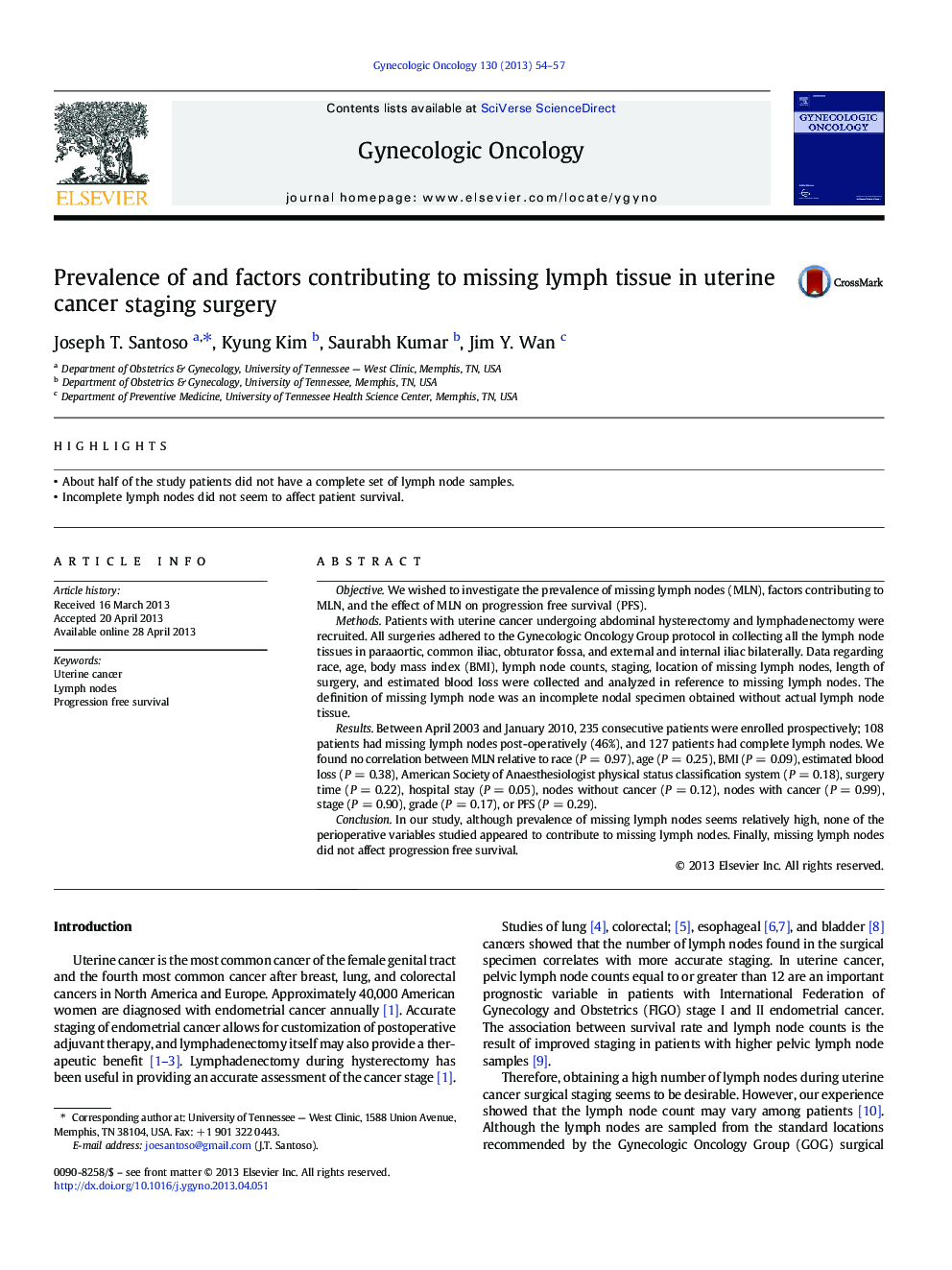| Article ID | Journal | Published Year | Pages | File Type |
|---|---|---|---|---|
| 6185496 | Gynecologic Oncology | 2013 | 4 Pages |
â¢About half of the study patients did not have a complete set of lymph node samples.â¢Incomplete lymph nodes did not seem to affect patient survival.
ObjectiveWe wished to investigate the prevalence of missing lymph nodes (MLN), factors contributing to MLN, and the effect of MLN on progression free survival (PFS).MethodsPatients with uterine cancer undergoing abdominal hysterectomy and lymphadenectomy were recruited. All surgeries adhered to the Gynecologic Oncology Group protocol in collecting all the lymph node tissues in paraaortic, common iliac, obturator fossa, and external and internal iliac bilaterally. Data regarding race, age, body mass index (BMI), lymph node counts, staging, location of missing lymph nodes, length of surgery, and estimated blood loss were collected and analyzed in reference to missing lymph nodes. The definition of missing lymph node was an incomplete nodal specimen obtained without actual lymph node tissue.ResultsBetween April 2003 and January 2010, 235 consecutive patients were enrolled prospectively; 108 patients had missing lymph nodes post-operatively (46%), and 127 patients had complete lymph nodes. We found no correlation between MLN relative to race (PÂ =Â 0.97), age (PÂ =Â 0.25), BMI (PÂ =Â 0.09), estimated blood loss (PÂ =Â 0.38), American Society of Anaesthesiologist physical status classification system (PÂ =Â 0.18), surgery time (PÂ =Â 0.22), hospital stay (PÂ =Â 0.05), nodes without cancer (PÂ =Â 0.12), nodes with cancer (PÂ =Â 0.99), stage (PÂ =Â 0.90), grade (PÂ =Â 0.17), or PFS (PÂ =Â 0.29).ConclusionIn our study, although prevalence of missing lymph nodes seems relatively high, none of the perioperative variables studied appeared to contribute to missing lymph nodes. Finally, missing lymph nodes did not affect progression free survival.
